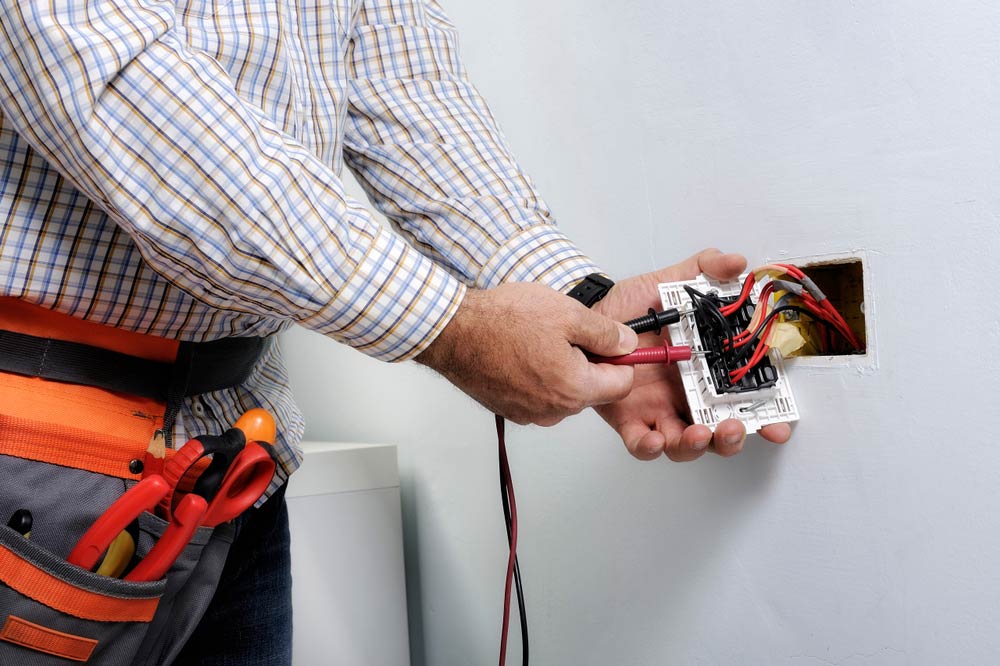Tailored BRE Electrical Solutions for Homes and Businesses
Tailored BRE Electrical Solutions for Homes and Businesses
Blog Article
The Ultimate Overview to Electrical Installment: Tips and Strategies for a Safe and Efficient Home Wiring System
In the world of home maintenance, couple of aspects are as crucial yet frequently neglected as the electrical circuitry system. By discovering the subtleties of electrical security actions and energy-saving practices, this thorough guide will lose light on the ins and outs of home circuitry, empowering people to take charge of their house's electric facilities.
Understanding Electric Safety And Security Procedures
To make certain the safety of both people and residential or commercial property, understanding and carrying out correct electrical safety steps is extremely important in any kind of home wiring project. It is vital to conduct a comprehensive evaluation of the electric system prior to beginning any wiring project to determine potential threats or issues that need to be addressed.
Furthermore, utilizing the ideal devices and tools is essential for maintaining safety throughout electric setups. Insulated handwear covers, voltage testers, and protective eyeglasses are several of the basic safety gear that must be used to avoid electric shocks or crashes. It is additionally essential to de-energize circuits prior to working with them and to label all circuits and breakers plainly to prevent confusion.

Essential Devices for Home Circuitry
Guaranteeing the correct application of electric safety actions in home wiring projects entails utilizing a certain set of essential tools developed to facilitate the setup process successfully and safely. Some of the key devices required for home circuitry jobs consist of a voltage tester for inspecting live cables, cable strippers for eliminating insulation from cords, a cord cutter for exactly cutting cables to size, a screwdriver set for securing electrical components, electrical tape for insulation and safeguarding links, a cable television ripper for removing cable sheathing, and a multimeter for measuring voltage, existing, and resistance.
Step-by-Step Electrical Installation Guide
Beginning an electric installment project needs precise preparation and adherence to safety and security standards. Prior to beginning any kind of work, guarantee you have a comprehensive strategy outlining the format of the electrical system, including the placement of outlets, switches, and components. Think about the power needs of each device to identify the proper cable gauge and circuit breaker sizes.
The first action in the installment procedure is to shut off the power supply to the location where you will certainly be functioning. Make use of a voltage tester to confirm that the circuits are de-energized prior to touching any type of cords. Next, very carefully remove existing fixtures or outlets and separate the cords.
When mounting new electrical wiring, run cable televisions via walls and ceilings, protecting them in area with ideal installations. Comply with regional building codes and manufacturer directions for correct cord installation and links. BRE Electrical Melbourne. Make sure to identify cables for simple recognition and future upkeep

Troubleshooting Common Circuitry Issues
Having completed the setup process as laid out in the previous subtopic, troubleshooting typical electrical wiring problems is an important skill for guaranteeing the safety and capability of your electrical system. One common problem is a tripped breaker, typically triggered by overloaded circuits or a brief circuit. To repair this, find the breaker panel, determine the stumbled breaker by searching for the one not fully in the "on" placement, and reset it by flipping it completely to "off" and after that back to "on." An additional common trouble is a faulty electrical outlet, defined by no power or recurring power supply. Make sure the electrical outlet is not regulated by a switch, after that utilize a voltage tester to examine for power. If there is no power, turn off the circuit, inspect the wiring connections for any loosened or broken cords, and change the outlet if required. Continuously flickering lights can show loosened wiring links or an overloaded circuit. To resolve this, check and tighten up all cord links in the affected components and switches and rearrange the tons on the circuit to stabilize the electric need. Regularly checking and without delay attending to these usual wiring problems will maintain the safety and security and efficiency of your home electrical system.
Tips for Energy-Efficient Electric Systems
For ideal energy performance in electrical systems, applying smart techniques and using energy-saving technologies is critical. One key suggestion for attaining an energy-efficient electrical system is to upgrade to LED lighting. LED light bulbs consume substantially less power than traditional incandescent light bulbs and have a longer life-span, making them a cost-effective option over time. Furthermore, mounting programmable thermostats can help manage home heating and cooling down systems, minimizing energy waste when nobody is home. Another method is to spend in energy-efficient home appliances that are ENERGY celebrity accredited, guaranteeing they fulfill high standards for energy performance. Appropriate insulation and securing of windows, doors, and electric outlets can also protect against power loss, ultimately minimizing the workload on electric systems. Finally, take into consideration incorporating eco-friendly power resources like solar panels to more reduction dependence on traditional power grids. By incorporating these energy-efficient suggestions and modern technologies, homeowners can not only save cash on their electrical power costs however likewise minimize their ecological influence.
Final Thought
Finally, executing proper security procedures, using important devices, complying with BRE Electrical Solutions a step-by-step installation guide, fixing common problems, and integrating energy-efficient suggestions are important for a risk-free and efficient home circuitry system. By sticking to these techniques, house owners can make sure the longevity and capability of their electric setups. It is necessary to prioritize safety and efficiency when it involves electric work in order to protect against potential hazards and to preserve a reputable electric system in the home.
Report this page